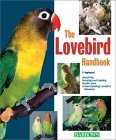What Gives Feathers Their Color
The color most people think about when they think of parrots is green. Did you know that parrots actually have no green pigment? Although they “appear” to be green, the only pigments are red and yellow, and the only other factors that affect color are melanin and feather structure.How can this be? If the bird appears green, it must be green. Actually, the green color you see is due to the effect of light scattering, reflecting off the feather structure. This is called the Tyndall Effect, and it creates the illusion of certain colors. Parrots also do have pigment in their feathers. These are called psittacin pigments, although some refer to them as carotenoids. Carotenoids are what give carrots and yellow squash their color. They are somewhat different than psittacin pigments in that carotenoids can be influenced by environmental elements. For example, this term more accurately describes the color of red canaries because this color can be intensified by the addition of certain nutritional elements to the diet. For parrots, foods do not generally influence intensity of color. This is not to say that a healthy bird on a good diet doesn’t have more vibrant colors, but this is due more to good health improving the sheen of the feathers so they better reflect light than an actual change in color.
The amount of red and yellow psittacin in an individual bird partially determines the overall color. A blue mutation is a bird with a complete absence of the red and yellow psittacin. There is another element that helps create the appearance of the blue: light scattering. These factors in combination give us a blue bird.
Another element that determines what color the bird “appears” to be is melanin. You have heard this term used in reference to people. For example, if a fair-skinned person is exposed to the sun over a long period of time, the skin will tan. This is due to the production of melanin. Melanin determines how light or dark feathers are as well. Melanin pigments are black and brown protein granules in the feather structure. They affect the ground, or base color, of the bird by darkening or lightening it. You can have a dilute blue (less melanin) or a dark blue or slate-type color (more melanin). In pied birds, the reduction in melanin varies on different parts of the feathers, giving a variegated look. In the ino mutations, such as lutino or albino, there is a complete absence of melanin, even in the eyes. These birds have red eyes in fact.
Feather structure also affects the color of the bird. Some “colors” are actually simply due to changes in the feather structure, which affects how light reflects. A good example are dark factors. Dark factors change the structure of the feather barb, which affects how the feather reflects light. In fact, you may notice some birds that carry a very dark mutation have almost a different look to their feathers–they don’t lay down as smoothly and may even appear a bit rough compared with the wild-type bird’s feathers.
Now you can see that the three elements then that affect the look of the feathers are the amount of red and yellow psittacin, the amount of melanin, and the feather structure. It is really quite amazing to think that all the varieties of colors we see in parrots and their mutations, from blue to albino, green to bright yellow, are influenced by these few elements. Your wild-type peachfaced lovebird, therefore, has high levels of red and yellow psittacin and no changes in the melanin. Add the effect of how light scatters, and you see a green bird with a bright reddish face.











cool….